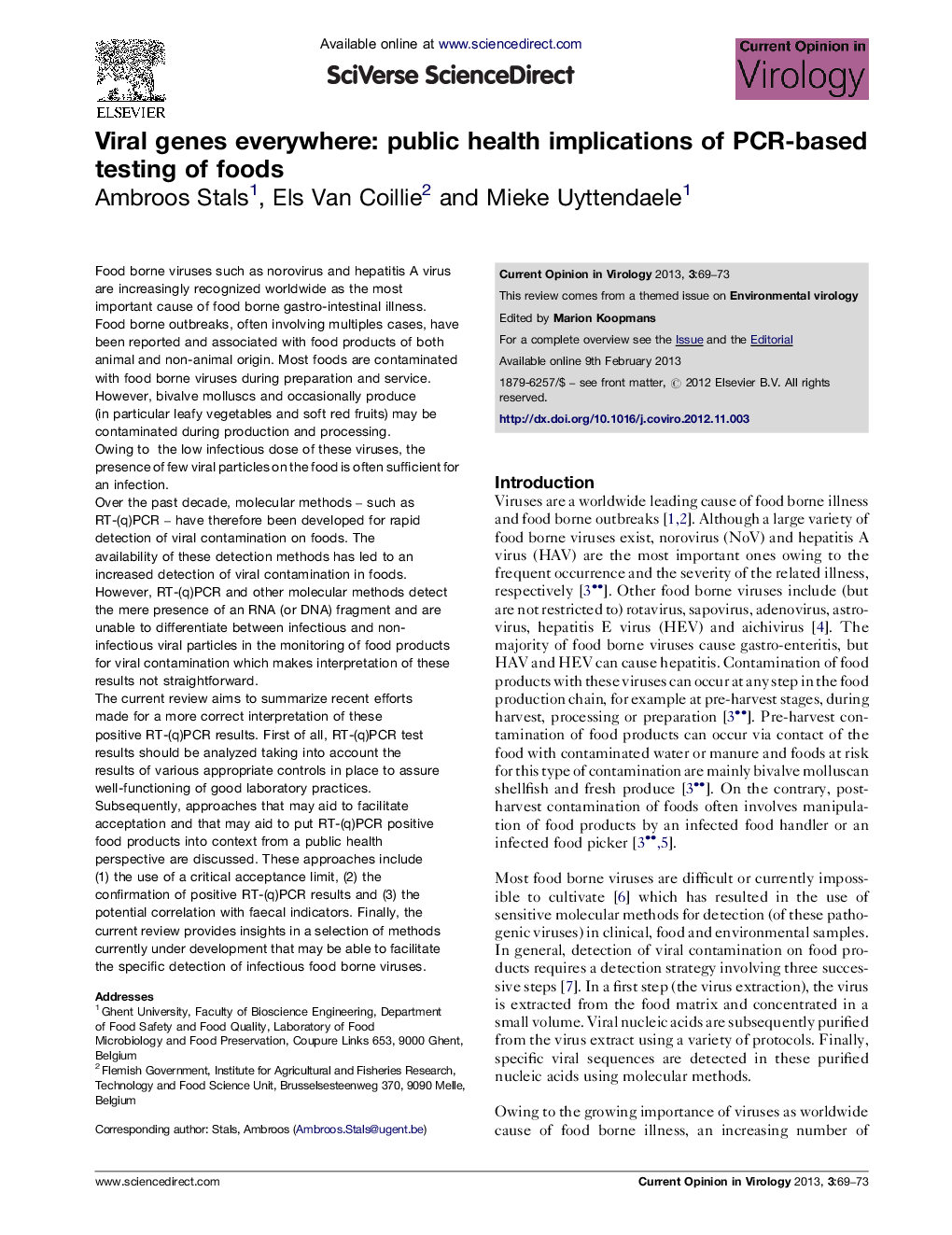| کد مقاله | کد نشریه | سال انتشار | مقاله انگلیسی | نسخه تمام متن |
|---|---|---|---|---|
| 2473526 | 1113020 | 2013 | 5 صفحه PDF | دانلود رایگان |

Food borne viruses such as norovirus and hepatitis A virus are increasingly recognized worldwide as the most important cause of food borne gastro-intestinal illness. Food borne outbreaks, often involving multiples cases, have been reported and associated with food products of both animal and non-animal origin. Most foods are contaminated with food borne viruses during preparation and service. However, bivalve molluscs and occasionally produce (in particular leafy vegetables and soft red fruits) may be contaminated during production and processing. Owing to the low infectious dose of these viruses, the presence of few viral particles on the food is often sufficient for an infection.Over the past decade, molecular methods – such as RT-(q)PCR – have therefore been developed for rapid detection of viral contamination on foods. The availability of these detection methods has led to an increased detection of viral contamination in foods. However, RT-(q)PCR and other molecular methods detect the mere presence of an RNA (or DNA) fragment and are unable to differentiate between infectious and non-infectious viral particles in the monitoring of food products for viral contamination which makes interpretation of these results not straightforward.The current review aims to summarize recent efforts made for a more correct interpretation of these positive RT-(q)PCR results. First of all, RT-(q)PCR test results should be analyzed taking into account the results of various appropriate controls in place to assure well-functioning of good laboratory practices. Subsequently, approaches that may aid to facilitate acceptation and that may aid to put RT-(q)PCR positive food products into context from a public health perspective are discussed. These approaches include (1) the use of a critical acceptance limit, (2) the confirmation of positive RT-(q)PCR results and (3) the potential correlation with faecal indicators. Finally, the current review provides insights in a selection of methods currently under development that may be able to facilitate the specific detection of infectious food borne viruses.
► We discussed the interpretation of foods testing positive for viruses by PCR.
► Special attention was paid to NoV limits, PC confirmation and indicator organisms.
► Future methods for detection of infectious viruses were reviewed shortly.
► Harmonization is important for widely accepted interpretation of PCR results.
Journal: Current Opinion in Virology - Volume 3, Issue 1, February 2013, Pages 69–73